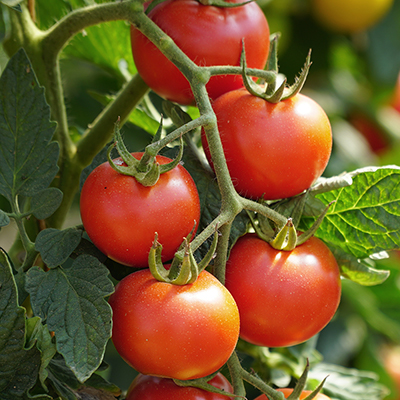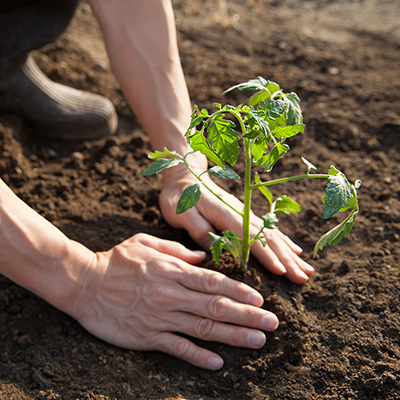How to Stake Tomatoes
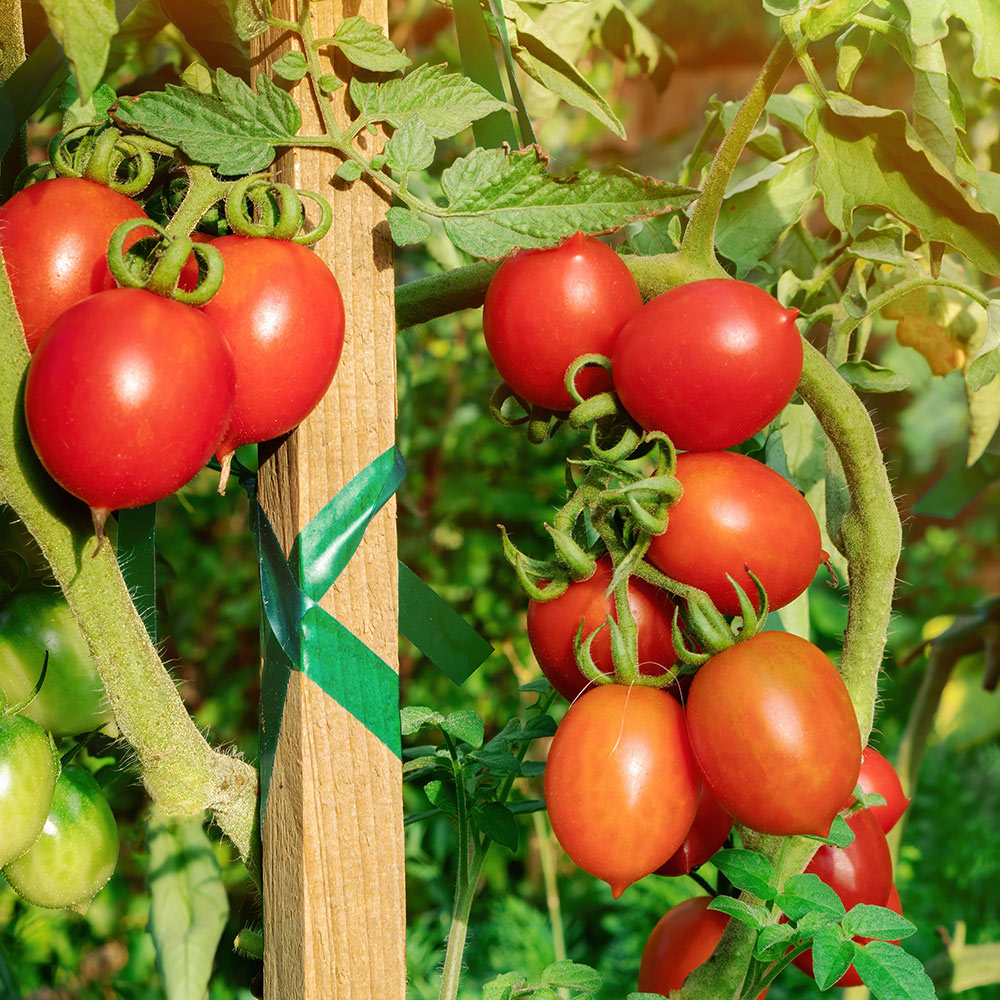
Last updated March 20, 2024
Staking your tomatoes gives the vines the support they need to grow healthy, plump and juicy fruit. Depending on the size of your space, you may need a cage or trellis, or combine any of the methods highlighted in this article.
Table of Contents
Reasons to Stake Tomatoes
Types of Tomato Plants
Types of Tomato Stakes
Types of Staking Methods
Reasons to Stake Tomatoes
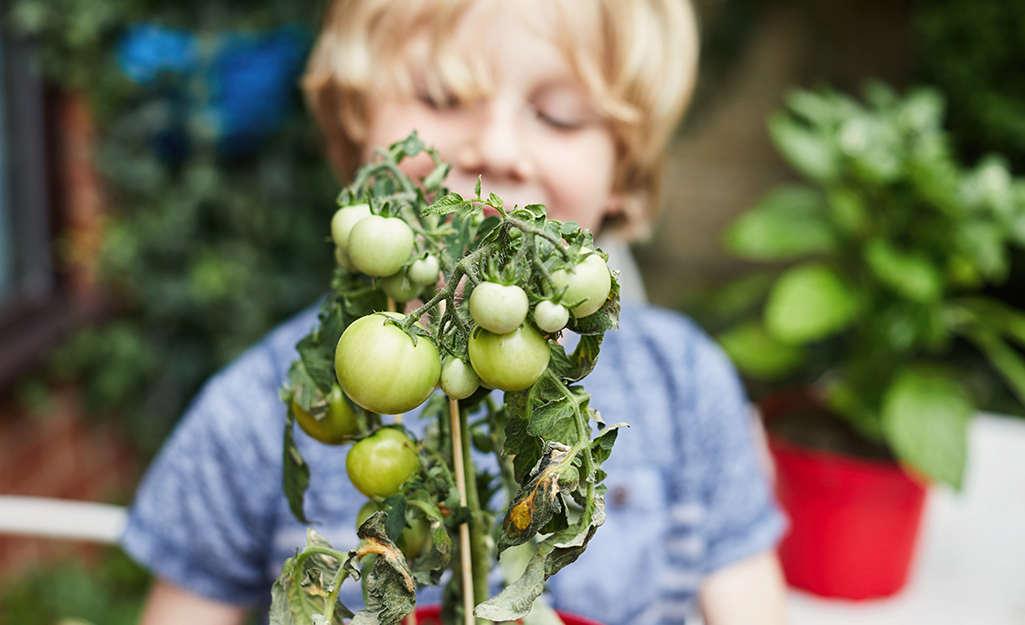
Staking tomatoes helps support vines as the plants grow upwards. Becasue tomato plants are vines, their leaves and stems are drawn to spread out as much as possible. Staking also saves space in your garden and makes trimming and tending easier. It reduces the risk of plants rotting, getting water-logged or getting diseases. Stakes lift plants off the ground, protecting them from garden pests.
Types of Tomato Plants
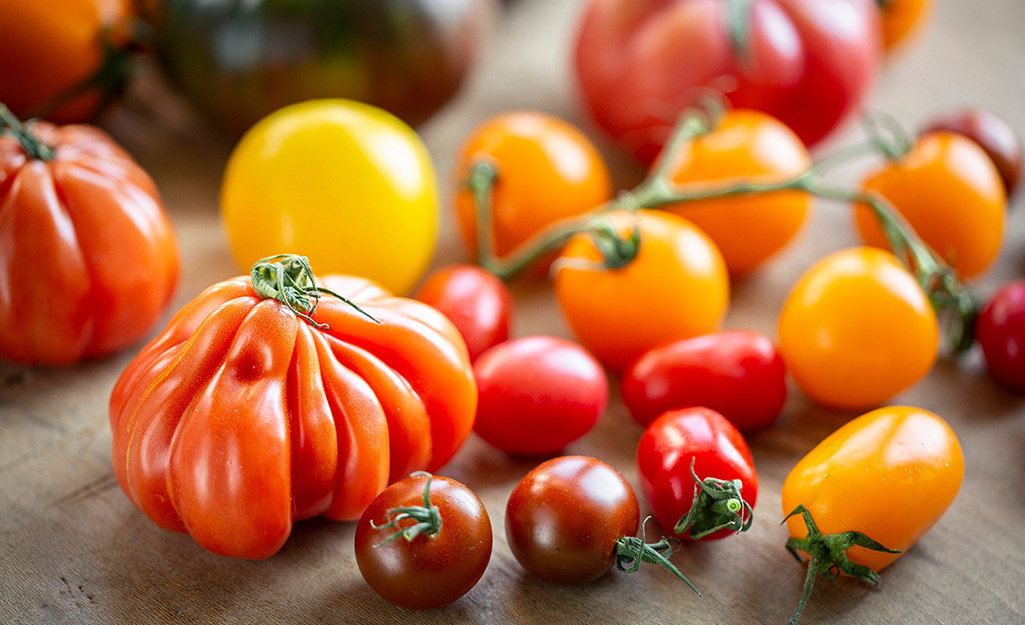
Knowing the type of tomato plant you're working with makes it easier to stake it properly. Tomato plants are either called determinate or indeterminate. Determinate tomatoes grow to set sizes. They grow all of the fruit they'll produce in a season within two weeks. Determinate tomatoes don't need as much support because they have smaller vines. Indeterminate tomatoes grow larger and heavier fruits over a longer period and need the support of stakes.
Types of Tomato Stakes
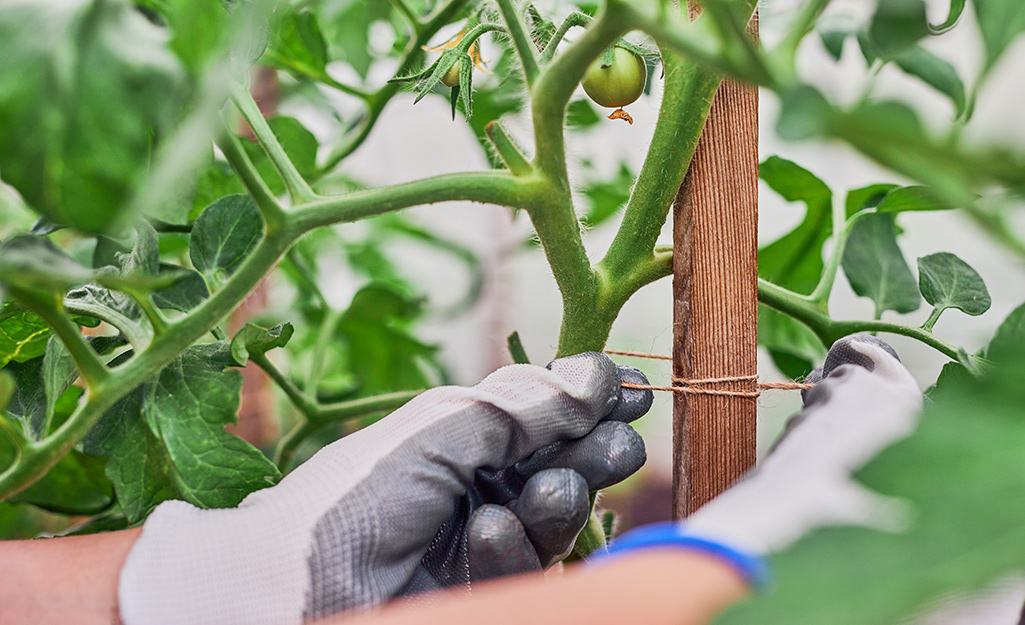
There are five main types of stakes used for tomato plants.
Tomato cages work well for determinate tomatoes. Cages support the plant as it grows. They also work as an extra barrier against some garden pests. To use a cage, center it around your tomato plant and push it into the soil until the first rung touches the garden bed.
Single stakes come in many heights and widths to support a variety of tomato plants. Stakes for indeterminate tomates are around six-to-seven feet tall. Determinate stakes are closer to three feet. Push the stake about one foot into the ground, five inches from the growing plant. Tie the tomato stem to the stake with twine. Add new ties every six-to-eight inches at the plant grows.
Spirals make great use of vertical space in your garden. Push it into the ground near the base of the tomato plant and gently wrap the vine around the spiral. Keep training the vines around the spiral as the plant grows.
Trellises offer extra support and provide more space for your plants to stretch out. When you see sections of your plants drooping or sagging, attach them to the trellis to spread out the weight.
Teepees provide more space and structure for sturdier growth. Tomatoes, along with beans, cucumbers, squash, peas and flowering vines, use the supports of the trellis to climb upward. This makes harvesting all your plants easy and keeps them off the ground.
Types of Staking Methods
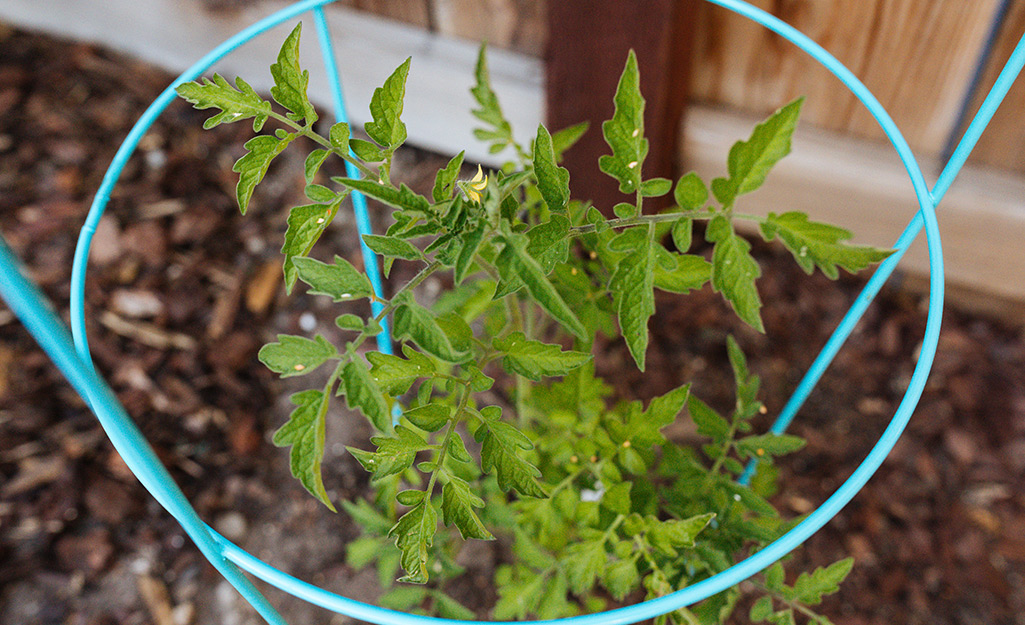
For a single stake, stake plants once they grow about a foot tall. Tie the stakes to the vine using your preferred tie, such as twine or plant tape. Re-tie the plants every six inches. Single stakes can be used in garden beds or container gardening.
Double staking is a great method for larger tomato varieties or heirlooms. Place two stakes on opposite sides of the plant. Tie twine around the plant stem and both stakes. Continue to add new ties as your tomato grows.
For a Florida weave, plant the tomatoes in two rows about two feet apart. Drive a stake at the start and finish of each row. Place additional stakes between every three plants. Tie twine around your first stake and weave it in front of one plant, then behind the next. Repeat this weaving pattern to the end of the row.
Now that you know how to stake tomatoes, you’re ready to start planting. No matter the style of stake or staking method you choose, your tomato plants will thank you. Try out several methods in your first year to see what works best for you and your garden. Use stakes in your tomato garden and enjoy delicious fruits all season long. The Home Depotis your DIY headquarters. Looking for a product to complete your project? We have options to deliver online orders when and where you need them.





